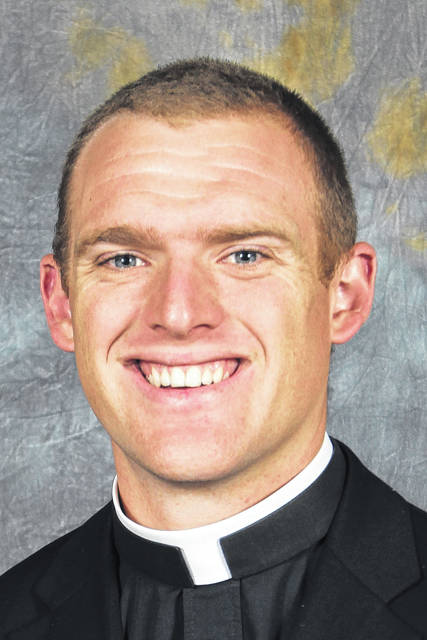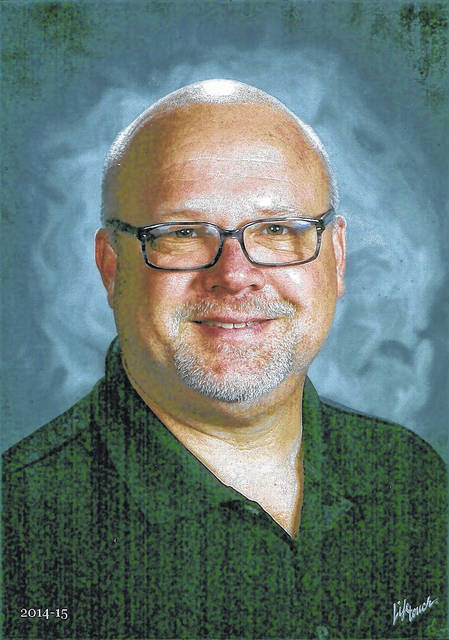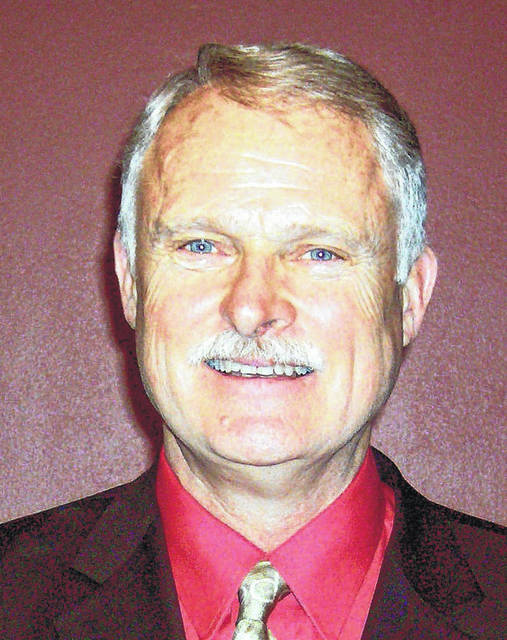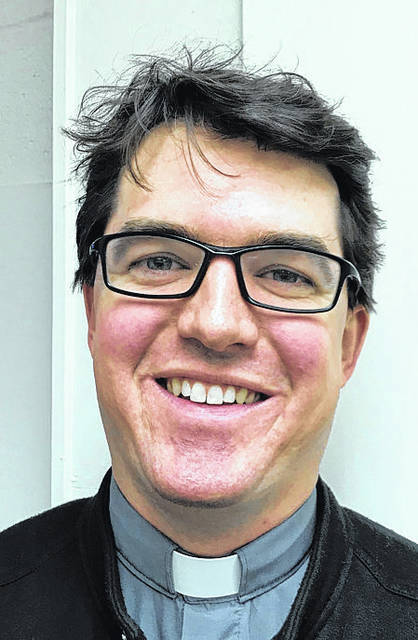



SIDNEY — If there were such a thing as frequent driver miles, several local pastors would be racking up major awards.
That’s because they each lead more than one church. They are not alone. Forty-four percent of America’s clergy are responsible for multiple congregations, according to Barna Group, a research organization focused on the intersection of faith and culture, according to its website, barna.com.
On any given Sunday, residents on area roadways will see the Rev. Bill Halter hurrying from the Lockington United Methodist Church to the Maplewood UMC, the Rev. Robert Ulmer driving — he swears he sticks to the speed limit — from the Rum Creek UMC in Quincy to his pulpit in Jackson Center, or the Rev. Sean Wilson moving from Immaculate Conception Catholic Church in Botkins to St. John’s in Fryburg or from Wapakoneta to Rhine. If Halter is late getting to Maplewood, the congregation knows to start the music without him. When Ulmer is stopped by a train, he prays as the boxcars stream by that the wait will be short.
Wilson has an additional challenge. As associate pastor of the Petersburg Parishes, he and the Rev. Patrick Slonaker pastor four churches, so every other week, they trade taking the lead at two of them. St. John the Evangelist in Fryburg, St. Joseph in Wapakoneta, Immaculate Conception in Botkins and St. Lawrence in Rhine comprise the group. The two priests take two-week rotations and Wilson depends on Google Calendar to put him in the right place at the right time.
There are other local churches who share their clergy. The United Methodist Churches in Anna and Botkins are led by the Randy Locker. At one time, the Episcopal priest of St. Mark’s in Sidney also led St. John’s in Piqua. The Rev. Steven Shoup has been the priest at St. Michael’s in Fort Loramie and Sts. Peter and Paul in Newport since 2005.
The idea of a clergyman’s leading multiple congregations is not new. In fact, it harks back to the establishment of the various religious orders in what was then the wilderness of the Northwest Territory before Ohio became a state. Priests would go from chapel to chapel and protestant ministers were circuit riders, visiting their churches on horseback every several months.
The reasons for today’s doubling up may be based in tradition, but they don’t stop there.
Dwindling church membership and a shortage of clergy are also factors. Ulmer noted that the mainstream American church is shrinking. Wilson agreed.
“You have fewer priests, fewer people, but the same number of parishes,” he said.
There is also a financial benefit. Although not every church has to work with a part-time leader because of economic concerns, in most pairings or clusters, at least one does. And sometimes it’s both.
“Both (Anna and Botkins) churches were struggling financially, but allowing them to pay me less has helped them,” Locker said.
While ministering to multiple flocks of parishioners may at times be challenging, local pastors take obstacles in stride and appreciate what’s unique as well as what’s the same about their congregations.
“It’s like having two children. Each has his own personality. So each church has its own personality. Each is in a different place in its walk with God. Each is in a different ministry, but they share a lot of similarities,” Halter said.
He wasn’t the only one to liken his church relationship to one at home. Ulmer said of his marriage that he had to learn how to love his wife in the way she needs to be loved.
“(In the same way), I had to learn to love each church,” he said.
“In some ways, it feels like you have four families. You want to be there for all of them, but you can’t be in four places at the same time,” Wilson said.
Of course, no one can. Which is why, when the churches began sharing their clergy, one of the biggest challenges was figuring out at what time each church would have Sunday services. Changes had to be made when previous schedules had worship at the same time in more than one place.
Once the service times were set, then Sunday school times had to be determined. At one church, Sunday school may take place before the service; at another, after. Because the churches have their own boards of trustees, finance committees and pastoral councils, there are also midweek meetings and special events that require a pastor’s presence. That all takes a toll on the clergyman.
“The first biggest issue is time management,” Halter said. “Getting a balance and keeping a balance. After three years, I’m starting to find that balance.”
Every church, he added, has both healthy practices and challenges.
“It’s almost an art to figure out how to feed into the successes we have and then to overcome the challenges we face,” he said. With two or more congregations, the stress of doing so is multiplied.
“It’s an adventure,” Wilson said.
The pastors have discovered that loving each congregation in its own way includes delivering the weekly sermon differently in each building.
None of them writes separate sermons, but all recognize that one group will be touched by something that may not have the same impact on the other group. For instance, one of the points in a scriptural passage means more in Jackson Center. Something else in the same passage is what Quincy parishioners remember.
“The difference is how you say it,” Ulmer noted. Delivery doesn’t change based solely on what they’re stressing, however. They also consider the rooms they’re in. A larger sanctuary calls for a louder voice. A smaller one requires a more intimate intonation.
The number of people listening influences things, too. The more people there are, “you have to speak to a wider range of things that are gong on in people’s live,” Ulmer said.
He even dresses differently in his two churches because the ambience is not the same.
“At Jackson Center, I wear a robe and stole. At Rum Creek, it’s street clothes and collar,” he said.
If the clergy-sharing arrangement created challenges for parishioners — a couple may have to be married by the deacon because the priest is booked elsewhere — it also has provided opportunities. Joint holiday services, community projects and special events including pool parties and day trips regularly bring congregants together. And churchgoers have a choice of attendance times. If a family can’t make it to their regular service, they can visit the other church for one at a different time. Family events can move, too.
“Sometimes funerals will go to the bigger churches. Some of our staff go to multiple churches. It’s great because we can pool resources and talent and ideas,” Wilson said.
The people of the Anna and Botkins UMCs won an award for the top project in the conference’s Miami Valley District for their Love One More program.
“It’s a four-day local mission. We target someone in need in one of the communities,” Locker said. A recent project had them installing a new roof and scraping and painting the house of an elderly resident. The congregations also participate in each other’s programs.
“We support each other,” said Evonne Schnippel, a member of the Botkins United Methodist Church in discussing what it’s like as a parishioner to know her minister leads a second flock. When the Botkins church recently hosted a community breakfast, Anna members attended. The youth fellowship of the two churches is combined as is the choir.
The pastors benefit, too.
“I don’t do everything. It’s been rewarding for me to see people step up and do ministry from the laity side,” Halter said. “It’s stretching me, helping me grow.”
Ulmer also feels that way.
“It’s grown me as a pastor to learn how to shift gears,” he said, “to see Jesus at work in two different sets of people. You get two different views of ministry. You get two experiences of grace.”





